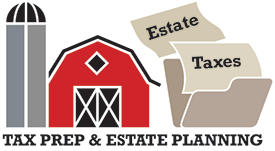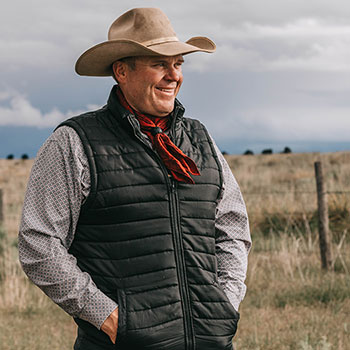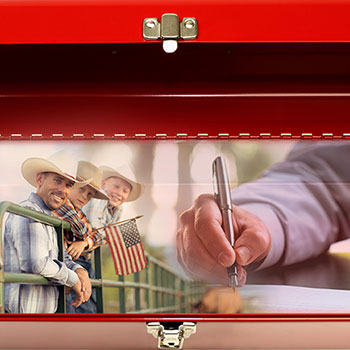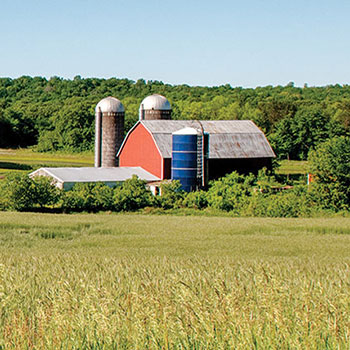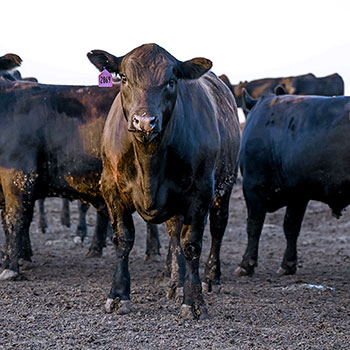Cull Numbers Up
Beef cow and heifer harvest remains aggressive.
According to recent data, the number of breeding beef females will most likely be lower than anticipated heading into the new year. There has been a larger cull-cow rate, and the pace has heightened in the last two weeks. The week after Labor Day normally sees cow harvest spike in the range of 15%-20% higher than the holiday-shortened Labor Day week head counts. A 15% increase was tallied this year, but we’ve since seen only further increases.
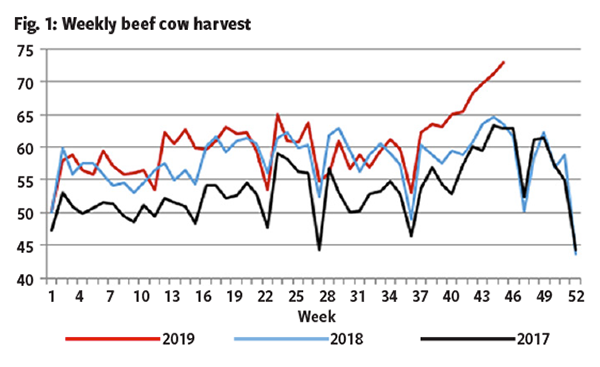 |
The cull-cow processing flow had been tracking slightly higher than a year ago, but in a very similar pattern with 2018 since May. If the trend would have followed a similar pattern from early September through November, the weekly total would have been in the range of around 63,000 head. Instead, cattlemen have culled larger numbers with a 66,000-head average for that period, while the last three weeks have averaged 71,000 head weekly.
If the packers that normally split their weekly harvest days between cows and fed cattle pivoted to commit more time to fed cattle in the wake of the Tyson plant fire, it doesn’t show up here in the cow harvest volume.
It is also evident that the proportion of fed heifers harvested this summer and fall has been aggressive, as well. Reports from the country have suggested large numbers of heifers on feed, and the disproportionate share of heifers in the fed-cattle harvest mix proves this to be accurate.
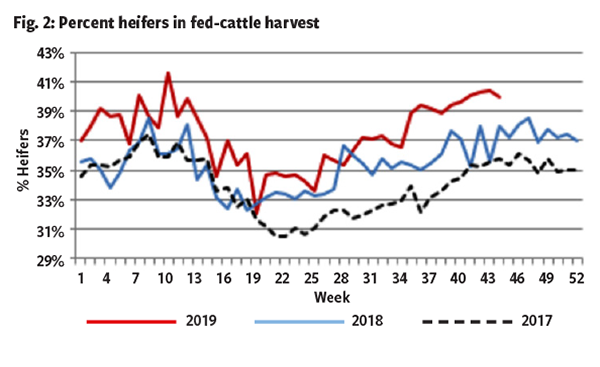 |
This divergence has been the case all year with a year-to-date increase of 7.4% heifers harvested while steers are down 0.4% on the year. This is quite disproportionate in a year where projections have been made for yet another small increase in the cow herd total by Jan. 1.
November and December mark the beginning of preg-checked “open” heifers entering the harvest mix in earnest. Several ranchers in the Northern Plains region have reported larger-than-normal “open” rates on their heifers this year. Many are pointing to the cumulative effects of weather beginning in the fall of 2018 through spring of this year.
Bringing this back around to a Certified Angus Beef® (CAB®) product perspective, let’s look at the expanded heifer harvest pace and its effect on marbling rates and CAB acceptance. We’ve long known that heifers post higher marbling scores on average than steers. Even so, the lower marbling trend in place for much of 2019 seems to show no causation between the two factors at face value. Possibly the lamented weather effects of 2019 have been too much for cattle to achieve their genetic marbling potential. Other possible factors have yet to be revealed.
Editor’s note: Paul Dykstra is a beef cattle specialist with CAB. Read more of Dykstra’s biweekly comments in the CAB Insider at http://bit.ly/CABInsider1120.
